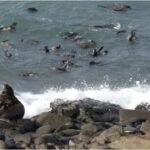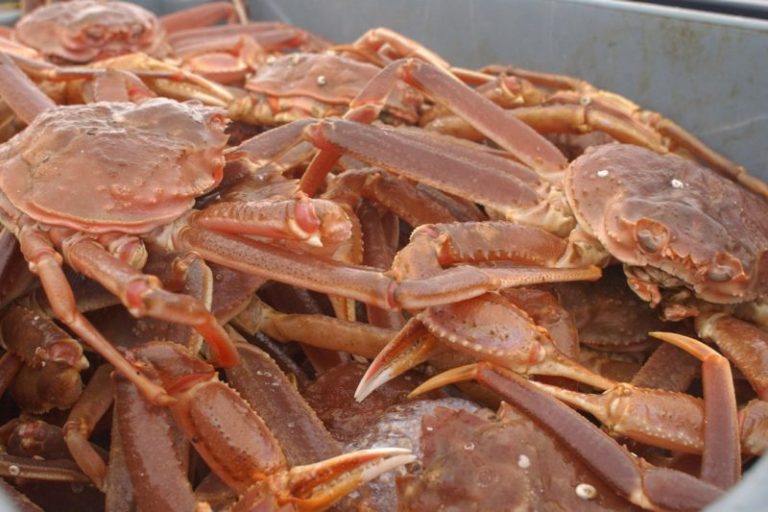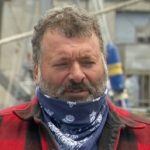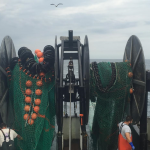Tag Archives: Fisheries Survival Fund

New Research Supports Opening of Currently Closed Scallop Areas
Data presented to the New England Fishery Management Council last month provide the latest evidence that long-closed areas of the Northwest Atlantic can be sustainably opened to the scallop fishery. The Fisheries Survival Fund, which represents the vast majority of full-time Atlantic Sea scallop fishermen, has long believed that these areas can be safely opened, and supports efforts to do so in light of this new evidence. The Northern Edge of Georges Bank (more formally known as Closed Area II Habitat Area of Particular Concern), has been closed to all commercial fishing activity since 1994. >click to read< 10:00
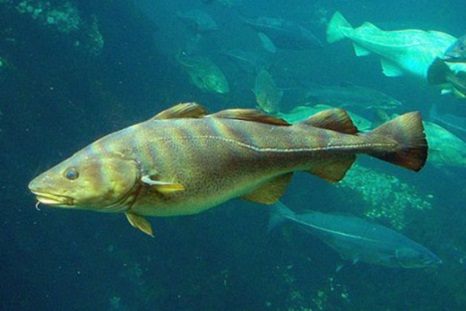
Ocean Industrialization: Fishing regulators fear wind turbines could threaten spawning area for Atlantic cod
It is the largest offshore HAPC designation in the region. Yet a main concern is cod spawning grounds in a smaller region within the designation, just east of Block Island. That area, known as Cox Ledge, overlaps with some 250 square miles currently leased to developers Ørsted and Eversource for their joint wind energy project: South Fork Wind. It is one of only two offshore wind projects that have completed the federal permitting process. “We are really going about the wind farm development very quickly,” said Kevin Stokesbury, a fisheries science professor at UMass Dartmouth, who studies cod in the Gulf of Maine. “It’s going to be quite a dramatic change to the ecosystem out there.” “We’ve all made sacrifices so cod can recover,” said Capt. Tim Rider, who fishes for groundfish and scallops. “Now they’re going to put a wind farm there,” he said of the cod spawning grounds. “How about they put it somewhere that might not be as intrusive.” >click to read< 11:05

America’s scallop harvest projected to decline again in 2022
The decline in scallops is happening as prices for the shellfish, one of the most lucrative seafoods in America, has increased amid inflation and fluctuations in catch. Seafood counters that sold scallops for $20 per pound to customers two years ago often sell them for $25 per pound or more now. U.S. scallop fishers harvested more than 60 million pounds of scallops in 2019, but the catch has declined since, and fishers were projected to harvest about 40 million pounds of scallops in the 2021 fishing year. That number is projected to fall to 34 million pounds in the 2022 fishing year, which started this spring, according to the New England Fishery Management Council. >click to read< 13:48
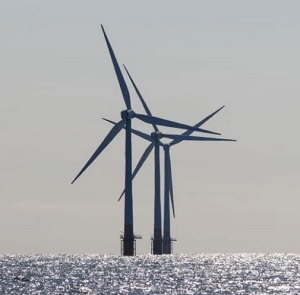
Scallop fishermen and industry advocates call for changes to proposed NY Bight offshore wind farm area’s
In an online call with Bureau of Ocean Energy Management (BOEM) officials, industry representatives highlighted the need for a buffer zone to protect the most valuable scallop area in the Mid-Atlantic and expressed concern over environmental and fisheries impacts of offshore wind development generally. Proposed lease areas need to be thoroughly re-evaluated to reduce impacts to scallops and scallop fishermen, who operate in the most valuable federally managed fishery. >click to read< 13:36
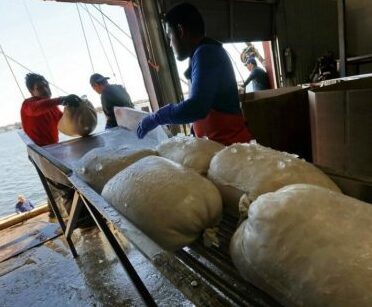
Fisheries Survival Fund: Change Offshore Wind Farm Areas to Protect Scallops
The Fisheries Survival Fund , is requesting that the Bureau of Ocean Energy Management, which is responsible for leasing areas for offshore development, incrementally change its lease plans for the New York Bight. Currently, two BOEM Wind Energy Areas, Hudson South and Central Bight, are located in particularly sensitive areas for scallops. In their current form, these areas, including hundreds of thousands of acres of ocean, will have a serious negative impact on the fishery. BOEM’s proposed eastern-most lease areas in Hudson South are directly adjacent to the Hudson Canyon Scallop Access Area, one of the most important scallop grounds in the Northeast. >click to read< 19:06
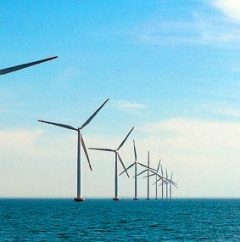
Jones Act changes would ‘jeopardise countless US jobs’ in offshore wind
US fisheries advocacy body the Fisheries Survival Fund (FSF) has claimed proposed changes to the Jones Act – requiring that cargo, including wind turbines, shipped between US ports be transported on American-flagged vessels – could cost ‘countless of job opportunities’ to local companies in the rapidly emerging Northeast Atlantic offshore wind sector. “These proposed modifications would place foreign-owned offshore wind energy companies at a unique advantage not afforded to the thousands of US-owned maritime industries, including commercial fisheries,” said FSF counsel David Frulla. “FSF is not submitting this letter to oppose offshore wind energy development in its entirety,, >click to read< 09:21
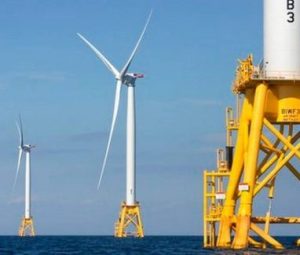
This Blows! Fishing industry raps proposed wind energy grid
“The proposed layout specifies that turbines will be spaced 1 nautical mile (nm) apart, arranged in east-west rows and north-south columns, with the rows and columns continuous across all New England lease areas.” But the claim that the newly proposed layout would satisfy the requests of the fishing industry did not entirely hold up once the developers’ plan was released publicly Tuesday morning. An organization that advocates on behalf of the scallop industry said its members were not consulted,,, >click to read< 19:41
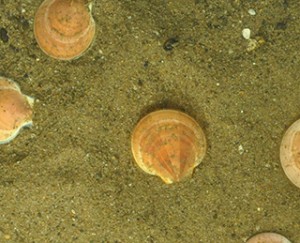
Federal Fishing Expansion Could Endanger Right Whales
Trump regulators opened about 3,100 square miles of ocean to fishing for scallops and fish that live near the bottom of the ocean such as halibut and flounder that had been closed for more than two decades, including a section of Georges Bank off Cape Cod, Mass., and part of the ocean near southern New England.,, A scallop fishing industry group, Fisheries Survival Fund, said no scallop vessel has ever had an interaction with a right whale. >click to read< 11:29
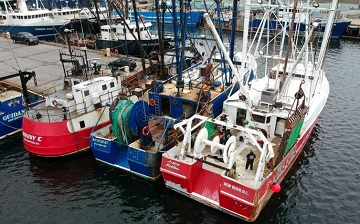
Fishermen face uphill battle in lawsuit over New York wind site
Fishermen and the city of New Bedford are facing an uphill battle in their fight against a New York offshore wind location after losing a lawsuit in September. Attorney David Frulla, who represents the Fisheries Survival Fund and other plaintiffs in the case, said he was disappointed at the court decision but has not given up. “I just don’t think the judge understood that these leases aren’t theoretical, that they actually confer rights,” he said. >click to read< 09:46
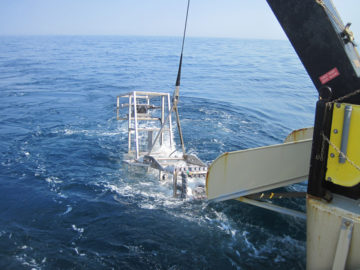
Fisheries Survival Fund: HabCam Failure Threatens 2019 Atlantic Sea Scallop Survey
The loss, recovery, and now electrical failure of the NOAA Northeast Fisheries Science Center “HabCam” habitat mapping camera means that the all-important 2019 Northeast sea scallop survey now continues as a dredge-only survey. The federal survey will thus conclude on June 15 without crucial sampling instruments, including cameras that photograph the ocean bottom. The HabCam, towed just above the ocean floor, provides a non-invasive, extensive, optically-based survey of the Atlantic scallop resource and ocean floor. NOAA Fisheries is working to make the HabCam a centerpiece research and survey tool. >click to read<09:51

New Video Shows Impacts of Offshore Wind On U.K. Fishermen
A new video, Winds of Change, released today by the Fisheries Survival Fund (FSF), documents how the arrival of offshore wind blindsided U.K. fishermen, and how the wind farms have permanently changed their traditional fishing grounds and how they make their livelihoods. Last year, two members of FSF traveled to the United Kingdom to learn how fishermen in Ramsgate, England and Aberdeen, Scotland have been impacted by offshore wind development. Those lessons are documented in Winds of Change. “As offshore wind moves forward here in the U.S., it’s essential that it’s able to co-exist with the fishing communities that have depended on these waters for generations,” said Andrew Minkiewicz, an attorney for FSF. “We must learn from the experiences of European fishermen if we want to avoid the same pitfalls and make the best decisions for American fishermen and offshore wind developers.” >click to read<19:14
Winds of Change – >click to watch<

Court rejects fishermen’s challenge to Equinor’s Empire Wind
A D.C. district court rejected an attempt by commercial fishing groups to block a wind project off the coast of New York on Sunday, siding with developer Equinor ASA and the Interior Department. The Fisheries Survival Fund (FSF), which represents scallop fishermen who work off the Atlantic coast, claimed that the Interior Department’s Bureau of Ocean Energy Management (BOEM) had violated two federal laws when it awarded Equinor, formerly Statoil, the $42 million rights to assess potential for wind turbines in a 127-square-mile block in 2016.,, The agency issued the lease without considering the interests of fishermen within that area, said the FSF, joined by several local seafood and fishing associations and three towns in Rhode Island, Massachusetts and New Jersey. >click to read<11:40
Cape fishermen push for action on habitat protection
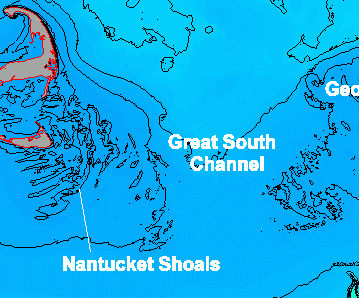 Part of managing fisheries is identifying and protecting that habitat. But the ocean is a big place and a difficult environment to do analysis. Politically, it’s also fractious terrain as fishermen worry about the balance between conservation and being shut out of traditional and productive fishing grounds. And so, it took 14 years for the New England Fishery Management to craft regulations protecting fish habitat, passing Omnibus Habitat Amendment 2 in June of 2015. But after over two years of review by the council and the National Marine Fisheries Service, it still hasn’t been implemented,,, click here to read the story 11:19
Part of managing fisheries is identifying and protecting that habitat. But the ocean is a big place and a difficult environment to do analysis. Politically, it’s also fractious terrain as fishermen worry about the balance between conservation and being shut out of traditional and productive fishing grounds. And so, it took 14 years for the New England Fishery Management to craft regulations protecting fish habitat, passing Omnibus Habitat Amendment 2 in June of 2015. But after over two years of review by the council and the National Marine Fisheries Service, it still hasn’t been implemented,,, click here to read the story 11:19
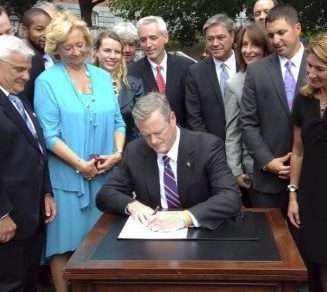
Not exactly a breeze: Offshore wind still faces challenges
Amid all of the challenges that could face offshore wind power along the East Coast — legal disputes from commercial fishing advocates, construction plans altered by whale migrations, President Donald Trump’s emphasis on revitalizing fossil fuels and more — some promising news for renewable industry supporters arrived in mid-March. That’s when a telling indication of how offshore wind power might fare under President Trump was delivered, after an uncertain, wait-and-see winter. Following months of silence about offshore wind, a statement by Secretary of the Interior Ryan Zinke gave an early glimpse of the administration’s tone. click here to read the story 09:22
Fishermen at odds over impact of Trump executive order
 An executive order by President Donald Trump designed to radically cut back on federal regulations has spurred disagreement among fishermen about how it will affect them — and lawmakers and regulators aren’t sure what the answer is. Groups that represent both commercial and recreational fishermen are divided over whether Trump’s “one in, two out” approach to federal regulations will benefit their industry, harm it or not affect it at all.,, Several fishing groups, ranging from the Alaska Longline Fishermen’s Association to the Massachusetts Striped Bass Association, are joining Democratic Reps. Jared Huffman of California and Raul Grijalva of Arizona in asking Trump to rescind.,, Other industry interests, including the Fisheries Survival Fund, said the order will likely leave fisheries unaffected. The order would apply only to financially significant regulations, and that would not include things like opening fishing seasons and enforcing catch limits, said Drew Minkiewicz, an attorney for the fund. “All this talk about how you’re not going to be able to manage fisheries — not true, doesn’t apply, not going to happen,” he said. Read the full story here 15:04
An executive order by President Donald Trump designed to radically cut back on federal regulations has spurred disagreement among fishermen about how it will affect them — and lawmakers and regulators aren’t sure what the answer is. Groups that represent both commercial and recreational fishermen are divided over whether Trump’s “one in, two out” approach to federal regulations will benefit their industry, harm it or not affect it at all.,, Several fishing groups, ranging from the Alaska Longline Fishermen’s Association to the Massachusetts Striped Bass Association, are joining Democratic Reps. Jared Huffman of California and Raul Grijalva of Arizona in asking Trump to rescind.,, Other industry interests, including the Fisheries Survival Fund, said the order will likely leave fisheries unaffected. The order would apply only to financially significant regulations, and that would not include things like opening fishing seasons and enforcing catch limits, said Drew Minkiewicz, an attorney for the fund. “All this talk about how you’re not going to be able to manage fisheries — not true, doesn’t apply, not going to happen,” he said. Read the full story here 15:04
Fishing Industry Fights N.Y. Offshore Wind Area In Court
 Lawyers representing a host of fishing communities, associations and businesses – led by scallop industry trade group the Fisheries Survival Fund – argued in U.S. District Court in Washington, D.C., yesterday against an offshore wind lease sale off the coast of Long Island, N.Y. A ruling is expected in the coming days, according to a press release from the Fisheries Survival Fund. The plaintiffs are seeking a preliminary injunction against the wind farm lease that the U.S. Bureau of Ocean Energy Management (BOEM) preliminarily awarded to Statoil for $42.5 million at an auction in December. They argued that the site of the project is in the middle of important fishing grounds, particularly for the scallop and squid fisheries. They also claimed that allowing the “unlawful” lease sale to go through would cause “irreparable harm to commercial fishermen.” Read the story here 07:31
Lawyers representing a host of fishing communities, associations and businesses – led by scallop industry trade group the Fisheries Survival Fund – argued in U.S. District Court in Washington, D.C., yesterday against an offshore wind lease sale off the coast of Long Island, N.Y. A ruling is expected in the coming days, according to a press release from the Fisheries Survival Fund. The plaintiffs are seeking a preliminary injunction against the wind farm lease that the U.S. Bureau of Ocean Energy Management (BOEM) preliminarily awarded to Statoil for $42.5 million at an auction in December. They argued that the site of the project is in the middle of important fishing grounds, particularly for the scallop and squid fisheries. They also claimed that allowing the “unlawful” lease sale to go through would cause “irreparable harm to commercial fishermen.” Read the story here 07:31
Decision on preliminary injunction on offshore sale in ‘coming days’
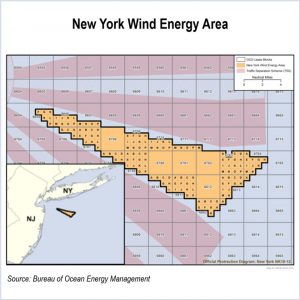 A US court is expected to issue a ruling in the coming days on a lawsuit seeking a preliminary injunction against the development of the up to 1GW New York offshore wind farm lease area. The Fisheries Survival Fund (FSF), which represents the majority of the limited access Atlantic scallop fleet, is the lead plaintiff in the lawsuit that alleges the Bureau of Ocean Energy Management (BOEM) leasing process did not adequately consider the impact of wind power development on the region’s fishermen. The plaintiffs, which also include the Garden State Seafood Association and the Long Island Commercial Fishing Association, argue that allowing the lease sale to go through would cause irreparable harm to commercial fishermen. Norwegian oil major Statoil won the December auction for the right to develop the 32,000-hectare site off the coast of Long Island with a bid of $42.5m. BOEM has delayed execution of the lease until the court has ruled on the preliminary injunction. Link 09:33
A US court is expected to issue a ruling in the coming days on a lawsuit seeking a preliminary injunction against the development of the up to 1GW New York offshore wind farm lease area. The Fisheries Survival Fund (FSF), which represents the majority of the limited access Atlantic scallop fleet, is the lead plaintiff in the lawsuit that alleges the Bureau of Ocean Energy Management (BOEM) leasing process did not adequately consider the impact of wind power development on the region’s fishermen. The plaintiffs, which also include the Garden State Seafood Association and the Long Island Commercial Fishing Association, argue that allowing the lease sale to go through would cause irreparable harm to commercial fishermen. Norwegian oil major Statoil won the December auction for the right to develop the 32,000-hectare site off the coast of Long Island with a bid of $42.5m. BOEM has delayed execution of the lease until the court has ruled on the preliminary injunction. Link 09:33
Statoil: Fishermen lobby for new spot for proposed Long Island wind farm
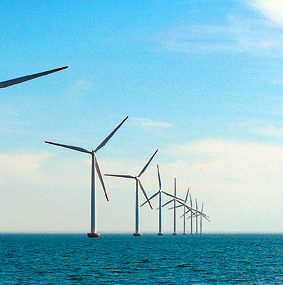 In Joe Gilbert’s view, fishermen like him shouldn’t have to compete with wind farms for a piece of the ocean. “We’re not anti-wind farm,” Gilbert said this past week. “But we don’t want to trade one renewable resource — fish — for another one — wind. They can both exist.” Gilbert is the owner of Empire Fisheries, which has four scallop and squid fishing boats based at the Town Dock. He’s also a member of the board of the Fisheries Survival Fund, one of 12 fishermen groups from New England to New Jersey opposing the federal government’s recent approval of a provisional lease to a Norwegian company that proposes to develop a wind farm on 79,350 acres of ocean bottom about 13 miles south of Jones Beach in Hempstead, Long Island. “What we’re asking is that it be relocated,” said Meghan Lapp, fisheries liaison with Sea Freeze, a squid wholesaler based in North Kingstown, R.I., that has joined the Fisheries Survival Fund in challenging the wind farm plan. The site of the proposed wind farm, fishermen say, is one of the most productive squid and scallop fishing areas in the North Atlantic. But the long trawling nets used by these fisheries could not maneuver within a “pinball machine of structures” that would constitute the wind farm, Lapp said. “It would be too dangerous.” Read the story here 09:01
In Joe Gilbert’s view, fishermen like him shouldn’t have to compete with wind farms for a piece of the ocean. “We’re not anti-wind farm,” Gilbert said this past week. “But we don’t want to trade one renewable resource — fish — for another one — wind. They can both exist.” Gilbert is the owner of Empire Fisheries, which has four scallop and squid fishing boats based at the Town Dock. He’s also a member of the board of the Fisheries Survival Fund, one of 12 fishermen groups from New England to New Jersey opposing the federal government’s recent approval of a provisional lease to a Norwegian company that proposes to develop a wind farm on 79,350 acres of ocean bottom about 13 miles south of Jones Beach in Hempstead, Long Island. “What we’re asking is that it be relocated,” said Meghan Lapp, fisheries liaison with Sea Freeze, a squid wholesaler based in North Kingstown, R.I., that has joined the Fisheries Survival Fund in challenging the wind farm plan. The site of the proposed wind farm, fishermen say, is one of the most productive squid and scallop fishing areas in the North Atlantic. But the long trawling nets used by these fisheries could not maneuver within a “pinball machine of structures” that would constitute the wind farm, Lapp said. “It would be too dangerous.” Read the story here 09:01
Alternative Energy Collides With Fishermen’s Livelihood Off Long Island
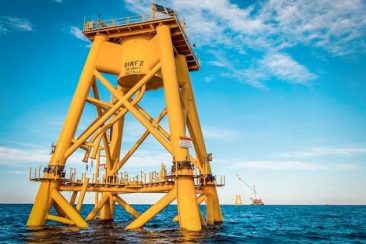 The federal government on Thursday plans to auction off a parcel of 79,000 acres in the Atlantic Ocean just south of Long Island to build a wind farm over fishing grounds that scallop and squid fishermen say are vital to their trade. Bidders hope to secure a 25-year lease to operate a wind farm, to sell the electricity to energy-hungry Long Island and the New York City region. Offshore wind is a big part of Governor Andrew Cuomo’s plan for New York to get half of its energy from alternative sources by 2030. But the commercial fishing industry opposes building wind turbines on this particular stretch of the Atlantic Ocean, which is sandwiched between shipping lanes into and out of the New York harbor. “We are very afraid we are going to lock up an area of the bottom that is definitely favorable for scallop settlement,” said James Gutowski, a scallop fisherman from Barnegat Light, N.J., and chairman of the Fisheries Survival Fund. Members of the fishing industry say the Bureau of Ocean Energy Management didn’t adequately consider what the impact would have on scallop and squid fishing grounds. Read the story here 08:24
The federal government on Thursday plans to auction off a parcel of 79,000 acres in the Atlantic Ocean just south of Long Island to build a wind farm over fishing grounds that scallop and squid fishermen say are vital to their trade. Bidders hope to secure a 25-year lease to operate a wind farm, to sell the electricity to energy-hungry Long Island and the New York City region. Offshore wind is a big part of Governor Andrew Cuomo’s plan for New York to get half of its energy from alternative sources by 2030. But the commercial fishing industry opposes building wind turbines on this particular stretch of the Atlantic Ocean, which is sandwiched between shipping lanes into and out of the New York harbor. “We are very afraid we are going to lock up an area of the bottom that is definitely favorable for scallop settlement,” said James Gutowski, a scallop fisherman from Barnegat Light, N.J., and chairman of the Fisheries Survival Fund. Members of the fishing industry say the Bureau of Ocean Energy Management didn’t adequately consider what the impact would have on scallop and squid fishing grounds. Read the story here 08:24
East Coast Fishermen voice objections over plan for wind farm off New York coast
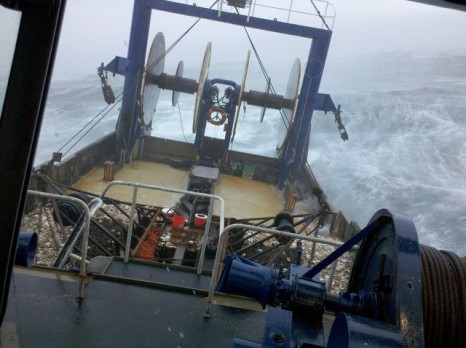 A long-stalled plan to build a forest of power-producing windmills off the coast of New York may finally be gathering momentum, and that is sparking concern among commercial fishermen who fear the giant turbines will ruin an area rich with scallops and other sea life. Federal officials announced earlier this month that they would auction off the rights to build the wind power farm on a 127-square-mile wedge of the Atlantic Ocean. The tip of the wedge begins about 11 miles south of Long Island’s popular Jones Beach and spreads out across an area, sandwiched between major shipping lanes, where trawlers harvest at least $3.3 million worth of sea scallops each year, as well as smaller amounts of mackerel, squid and other species, according to a study commissioned by the Bureau of Ocean Energy Management. “There’s got to be a better place,” said Eric Hansen, a scallop fisherman based in New Bedford, Massachusetts. Read the rest here 08:39
A long-stalled plan to build a forest of power-producing windmills off the coast of New York may finally be gathering momentum, and that is sparking concern among commercial fishermen who fear the giant turbines will ruin an area rich with scallops and other sea life. Federal officials announced earlier this month that they would auction off the rights to build the wind power farm on a 127-square-mile wedge of the Atlantic Ocean. The tip of the wedge begins about 11 miles south of Long Island’s popular Jones Beach and spreads out across an area, sandwiched between major shipping lanes, where trawlers harvest at least $3.3 million worth of sea scallops each year, as well as smaller amounts of mackerel, squid and other species, according to a study commissioned by the Bureau of Ocean Energy Management. “There’s got to be a better place,” said Eric Hansen, a scallop fisherman based in New Bedford, Massachusetts. Read the rest here 08:39
NEFSC, R/V Hugh R. Sharp Lose HabCam during Scallop survey, Fisheries Survival Fund takes them to task!
 Last Thursday, May 19, 2016, while on the current scallop survey, the NEFSC crew lost the HabCam when it separated from the vessel. According to initial reports, it was inadvertently driven into the side of a known and charted shipwreck while being operated by a volunteer, losing at least a week of valuable sea time. Several knowledgeable sources have suggested that there could be as much as $100,000 in damage. Accordingly, the researchers must return to port to acquire a remote operated vehicle, which they will use to attempt to find the lost HabCam. The loss of a key piece of scallop survey equipment demonstrates the need for an overhaul of how the federal government assesses the species. The Fisheries Survival Fund (FSF), which represents the majority of the limited access scallop fleet, calls for reforms to how scallop surveys are conducted to prevent such an incident from derailing surveys in the future. Read the rest here 17:25
Last Thursday, May 19, 2016, while on the current scallop survey, the NEFSC crew lost the HabCam when it separated from the vessel. According to initial reports, it was inadvertently driven into the side of a known and charted shipwreck while being operated by a volunteer, losing at least a week of valuable sea time. Several knowledgeable sources have suggested that there could be as much as $100,000 in damage. Accordingly, the researchers must return to port to acquire a remote operated vehicle, which they will use to attempt to find the lost HabCam. The loss of a key piece of scallop survey equipment demonstrates the need for an overhaul of how the federal government assesses the species. The Fisheries Survival Fund (FSF), which represents the majority of the limited access scallop fleet, calls for reforms to how scallop surveys are conducted to prevent such an incident from derailing surveys in the future. Read the rest here 17:25
Scallop Sparks flying in advance of New England Fishery Management Council meeting
 The scallop industry is on high alert over next week’s meeting of the New England Fishery Management Council after a long warning letter was sent to the council by NOAA
The scallop industry is on high alert over next week’s meeting of the New England Fishery Management Council after a long warning letter was sent to the council by NOAA Fisheries Regional Administrator John Bullard. The council’s Habitat Committee has issued recommendations that fishing restrictions be lifted on several areas of Georges Bank, the Gulf of Maine and the South Channel. But Bullard, backed by his agency’s scientific staff, said he believes that the relaxing of the restrictions would set back the effort to nurse fish stocks back to health. Read the rest here 22:03
Your View: Eric Hansen – Scallopers need access to Georges Bank
![]() The scallop fishery has become the lifeblood of the New Bedford waterfront, a bright spot in a fishing industry encumbered by onerous regulations and heavy-handed management. It has helped make New Bedford, for the 13th year in a row, the most valuable port in the nation. But,,,Read more here 11:11
The scallop fishery has become the lifeblood of the New Bedford waterfront, a bright spot in a fishing industry encumbered by onerous regulations and heavy-handed management. It has helped make New Bedford, for the 13th year in a row, the most valuable port in the nation. But,,,Read more here 11:11
CLF Environmental Lawyers Attack Industry Lawyers on Closure Issues Using Research That Fails To Support Their Own Recommendations
WASHINGTON — February 24, 2014 — The following was released by Andrew E. Minkiewicz and Anne Hawkins of the Fisheries Survival Fund : Last week, the lawyers at the Conservation Law Foundation used a posting on their Talking Fish blog (“Industry Lawyers Wrong on Closed Areas Science: An Open and Shut Case, February 18, 2014) to attack our Read more here 08:23




































